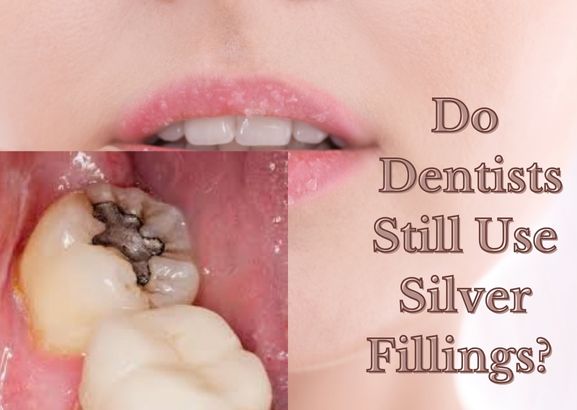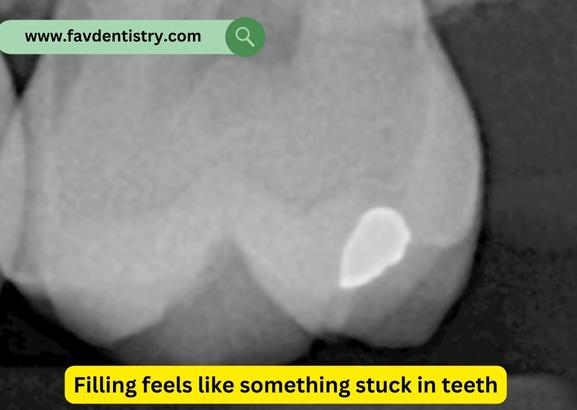The Power of Time: How Long Do Silver Fillings Last?
Last Updated on 6 months by DR. ALBIN SIPES
Silver fillings typically last between 10 to 15 years before needing to be replaced. Silver fillings, also known as amalgam fillings, have been used for decades and are known for their strength and durability.
However, over time, they can wear down, crack, or become loose, which may require a replacement. As a result, regular dental check-ups are essential to monitor the condition of silver fillings and address any issues before they become more significant problems.
Additionally, advances in dental technology have led to the development of other filling materials, such as composite resin, which may offer a longer lifespan and a more natural appearance.
Understanding Silver Fillings
Silver fillings, also known as dental amalgam, are a common material used for dental restorations. They contain a mixture of silver, tin, copper, and mercury. Silver fillings are known for their strength and durability, lasting an average of 10 to 15 years.
However, their lifespan can vary depending on factors such as oral hygiene, biting force, and the location of the filling. Despite their longevity, silver fillings do have some disadvantages. One drawback is their conspicuous appearance, as they are dark in color and may be noticeable when smiling or talking.
Additionally, silver fillings have raised concerns about the potential health risks associated with the mercury content. It is important to consult with a dentist to understand the advantages and drawbacks of silver fillings and explore alternative options for dental restorations.
Factors Affecting The Lifespan Of Silver Fillings
Factors affecting the lifespan of silver fillings include oral habits and hygiene practices, dietary habits and lifestyle choices, as well as the frequency and intensity of dental wear and tear. Good oral hygiene is crucial in maintaining the longevity of silver fillings.
Brushing and flossing regularly can help prevent decay and plaque buildup that can weaken the fillings over time. Additionally, adopting healthy dietary habits by limiting sugary and acidic foods and beverages can minimize the risk of further decay or erosion around the fillings.
Lifestyle choices, such as smoking or excessive alcohol consumption, can also negatively impact the lifespan of silver fillings. Lastly, the frequency and intensity of dental wear and tear, such as teeth grinding or clenching, can potentially cause damage to the fillings.
By taking these factors into consideration, individuals can play an active role in ensuring the longevity of their silver fillings.
Evaluating The Longevity Of Silver Fillings
Silver fillings, while durable, have a limited lifespan and may require replacement over time. Evaluating the longevity of silver fillings is crucial. Understanding the average lifespan of silver fillings is essential for proper dental care. Examining signs and symptoms that your silver filling may be failing is important.
Regular dental check-ups can help determine if your silver filling needs replacement. Pay attention to any sensitivity, pain, or changes in the appearance of the filling. Consulting with your dentist is highly recommended to address any concerns and ensure the longevity of your fillings.
It’s vital to prioritize oral health and take proactive measures to maintain a healthy smile.
Enhancing The Durability Of Silver Fillings
Enhancing the durability of silver fillings relies on optimal oral hygiene practices such as regular brushing and flossing. Maintaining a balanced diet and reducing consumption of sugary foods and drinks can also help minimize the risk of silver filling failure.
In addition, it is essential to attend regular dental check-ups for professional cleaning, as this can prevent decay and detect any issues with the fillings early on. By following these practices, individuals can prolong the lifespan of their silver fillings and enjoy a healthier, more sustainable smile.
Possible Alternatives To Silver Fillings
Tooth-colored fillings are a popular alternative to silver fillings for restoring dental cavities. The main advantage of tooth-colored fillings is their aesthetic appeal, as they blend seamlessly with the natural color of teeth. Additionally, these composite resin fillings are less likely to cause tooth sensitivity or discoloration.
However, there are some drawbacks to consider. Tooth-colored fillings can be more expensive than silver fillings and may not be covered by insurance. They also require more skill and time to place, as the teeth need to be clean and dry for the material to bond properly.
In some cases, silver fillings may still be recommended for larger cavities or areas with heavy chewing pressure. Other restorative options for dental cavities include dental crowns and inlays/onlays, which may be more suitable depending on the individual’s needs.
The Role Of Dentists In Prolonging Silver Fillings’ Lifespan
Dentists play a crucial role in extending the lifespan of silver fillings. Regular dental examinations and x-rays are important for early detection of any issues. Professional intervention and preventive measures can help prolong the durability of silver fillings. After getting silver fillings, it is essential to follow the care instructions provided.
This includes practicing good oral hygiene, such as brushing and flossing regularly, avoiding hard foods that may damage the fillings, and scheduling routine dental check-ups. By adhering to these guidelines, individuals can maximize the longevity of their silver fillings and maintain their oral health.
So, it is crucial to consult with a dentist regularly and follow their advice for a lasting smile.
Frequently Asked Questions Of How Long Do Silver Fillings Last
How Long Do Silver Fillings Last?
Silver fillings can last on average 10 to 15 years, although some may last longer. The lifespan of silver fillings can depend on various factors like oral hygiene, teeth grinding, and the size of the filling. Regular dental check-ups can help determine if a silver filling needs to be replaced.
Conclusion
Silver fillings, also known as amalgam fillings, have been a popular choice for dental restorations for many years. However, as technology and dental materials have advanced, there is an increasing interest in alternative options. The question arises: how long do silver fillings last?
Based on research and clinical studies, silver fillings have a lifespan of approximately 10 to 15 years. Factors such as oral hygiene, diet, and regular dental check-ups can affect their longevity. While silver fillings are durable and cost-effective, they do have some drawbacks.
Over time, they may expand and contract, leading to cracks and leakage. Additionally, the noticeable silver appearance can be aesthetically undesirable for some patients. As a result, many individuals are turning towards tooth-colored fillings, such as composite resin or porcelain, which offer a more natural appearance and comparable durability.
These alternative materials have demonstrated excellent longevity, lasting up to 15 years or more with proper care. Ultimately, the choice between silver fillings and alternative options depends on each individual’s specific needs and preferences. Consulting with a dental professional can provide insight and guidance for making the best decision to achieve long-lasting dental restorations.



